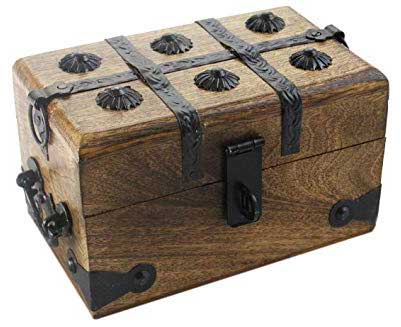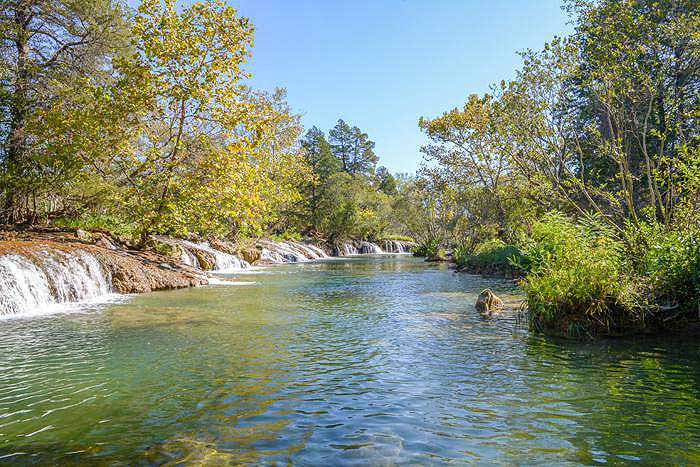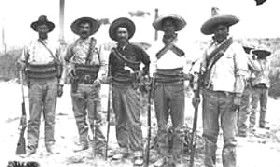
Echoes of Empire: The Enduring Quest for Mexican Treasure in Oklahoma’s Blue River
In the heart of southeastern Oklahoma, where the crystalline waters of the Blue River carve a path through limestone bluffs and dense woodlands, a legend persists—a whisper of forgotten wealth and ancient secrets. It speaks not of oil derricks or cattle drives, but of gleaming gold and silver, a treasure lost centuries ago, purportedly brought north from the rich mines of colonial Mexico and concealed amidst the rugged beauty of the Sooner State. This isn’t merely a local tall tale; it’s a persistent historical enigma that continues to fuel the imaginations of adventurers, historians, and dreamers, drawing them into a quest where the line between myth and reality blurs with every turn of the spade.
The narrative of a "Mexican Treasure" in Oklahoma is deeply rooted in the expansive reach of the Spanish Empire. From the 16th to the 19th centuries, Spain’s colonial territories stretched from the southern tip of South America well into what is now the American Southwest, including Texas, New Mexico, Arizona, and parts of Kansas and Oklahoma. This vast dominion was largely funded by the immense wealth extracted from silver mines in Zacatecas, Guanajuato, and other regions of New Spain (Mexico). Convoys laden with precious metals, often guarded by soldiers and accompanied by priests, routinely traversed perilous routes, heading south to Veracruz for shipment to Spain, or sometimes north along lesser-known trails for trade or military outposts.
It is these northern routes, often traversing lands that would eventually become Oklahoma, that form the bedrock of the Blue River legend. During the 17th and 18th centuries, the region was a wild, untamed frontier. Spanish expeditions, while not establishing permanent settlements as far north as Oklahoma, certainly ventured into these territories. These were dangerous journeys, fraught with the constant threat of attack from various Native American tribes defending their ancestral lands, as well as the ever-present dangers of disease, harsh weather, and treacherous terrain.

One popular version of the legend recounts a desperate retreat. Facing imminent attack or a sudden catastrophic event, a group of Spanish priests or soldiers, transporting a significant cache of gold and silver from Mexico, made the fateful decision to bury their precious cargo along the Blue River. The precise location is, of course, the heart of the mystery, often described cryptically through coded maps, faded documents, or generations-old oral traditions passed down by local Native American tribes and early settlers. The treasure, it is said, was intended to be retrieved later, once the danger had passed, but circumstances—perhaps the death of the burial party, the loss of their maps, or simply the sheer impossibility of relocating a hidden cache in an unmarked wilderness—prevented its recovery.
"The allure of Spanish gold isn’t unique to Oklahoma," notes Dr. Elena Rodriguez, a historian specializing in colonial New Spain. "But what makes the Blue River story so compelling is its persistence in an area that wasn’t a primary Spanish colonial hub. It speaks to the vastness of their reach, the dangers they faced, and the enduring human fascination with lost wealth. While concrete historical documents proving a specific burial event are scarce, the possibility is what keeps the legend alive."
The Blue River itself adds to the mystique. Known for its spring-fed clarity, vibrant blue-green hues, and abundant fishing opportunities, it is a place of undeniable natural beauty. Its banks are lined with ancient limestone formations, dense forests of oak and pecan, and secluded ravines – a perfect natural fortress for concealing secrets. The very landscape seems to whisper of forgotten times, its ruggedness both protecting the treasure and hindering its discovery. The river’s winding path, its hidden caves, and its often-inaccessible bluffs create an environment where a fortune could indeed vanish without a trace.
For generations, the legend has drawn a diverse cast of characters to the Blue River. There are the dedicated hobbyists, armed with metal detectors and GPS devices, who spend weekends meticulously scanning the riverbanks and surrounding hillsides. There are the more serious researchers, poring over old Spanish land grants, early American survey maps, and obscure historical texts, searching for any clue that might narrow down the vast search area. And then there are the lifelong treasure hunters, individuals who have dedicated decades, sometimes entire fortunes, to the pursuit of this elusive dream.
One such figure, a local known only as "Old Man Johnson" (a composite character representing many real-life searchers), reportedly spent over 40 years combing the Blue River area. "He had a stack of old maps, all hand-drawn, and a compass that looked like it belonged to a pirate," recalls a long-time resident of Tishomingo, a nearby town. "He swore he was close, always ‘just one more shovel full’ away. Never found anything big, but he found old Spanish coins now and then, enough to keep the fire burning." These small finds, often dismissed by skeptics as mere detritus from centuries of trade or casual loss, serve as powerful affirmations for the believers, tangible hints that the larger prize might indeed be real.
The methods employed by treasure hunters are as varied as their motivations. Some rely on dowsing rods or other forms of divination, convinced that the earth itself holds clues to its hidden riches. Others meticulously cross-reference local folklore with geological surveys, looking for anomalies that might suggest human interference in the landscape. Tales abound of cryptic markers carved into rocks, unusual rock cairns, or even the remnants of crude Spanish mining tools discovered near the river. Each such "discovery," whether verifiable or not, fuels the narrative and re-energizes the search.
However, the quest for the Blue River treasure is not without its challenges and controversies. Land ownership in the area is complex, with private properties, state parks, and tribal lands (belonging primarily to the Chickasaw and Choctaw Nations) all intertwined. Unauthorized digging can lead to legal troubles, and responsible treasure hunting requires careful negotiation with landowners and adherence to archaeological ethics. There’s also the constant threat of hoaxers and charlatans, individuals who prey on the hopes of others, selling fabricated maps or misleading information.
Furthermore, the very nature of the treasure—often described as Spanish colonial artifacts, gold, and silver—places it under the purview of various antiquities laws. Should a significant find ever be made, its ownership would be a complex legal battle involving the finder, the landowner, and potentially the state or even the government of Spain or Mexico, depending on its provenance and historical significance. This legal labyrinth adds another layer of intrigue and complexity to the already challenging pursuit.

Despite the lack of definitive, large-scale archaeological proof, the legend endures. For many, the Blue River treasure represents more than just monetary wealth. It embodies a connection to a grander, more romantic past, a tangible link to the age of exploration and empire. It speaks to the human desire for discovery, for adventure, and for the thrill of uncovering a secret that history has long kept hidden.
"It’s a testament to the power of storytelling," observes Sarah Jenkins, a local folklorist. "Even if the treasure itself is ultimately a myth, the legend has shaped our local identity. It’s something people talk about around campfires, something that adds a layer of mystery to our beautiful landscape. It reminds us that our history is richer and more complex than what’s written in textbooks."
The Blue River treasure is, in many ways, a microcosm of the global fascination with lost fortunes. From the Lost Dutchman’s Gold Mine in Arizona to the Oak Island money pit in Nova Scotia, these legends tap into universal human desires: the hope of instant wealth, the challenge of solving an ancient puzzle, and the romance of a forgotten era. In Oklahoma, this particular legend also serves as a subtle reminder of the state’s often-overlooked position within the broader tapestry of North American history, connecting its seemingly isolated wilderness to the grand narratives of colonial power and global trade.
As the sun sets over the Blue River, casting long shadows across its ancient bluffs, the waters continue their ceaseless flow. Beneath the surface, the secrets of centuries remain guarded, whether they be geological wonders or the glittering remnants of a forgotten empire. The Mexican Treasure of Oklahoma’s Blue River stands as a powerful symbol: a testament to the enduring allure of the unknown, a silent challenge to those brave enough to seek it, and a timeless reminder that sometimes, the greatest treasures are found not in what is unearthed, but in the persistent hope and the captivating stories that drive the quest itself. The hunt continues, not just for gold and silver, but for a deeper understanding of history, humanity, and the magic that lies just beneath the surface of the world.


